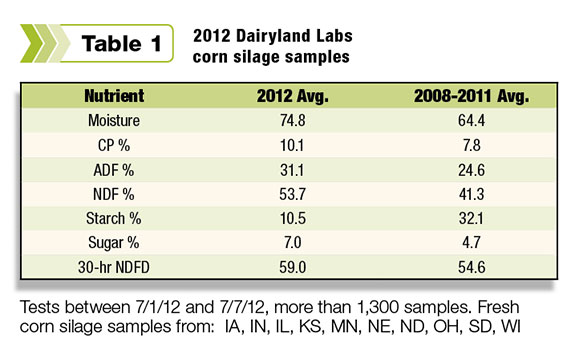Have you heard of anyone rushing in to become a custom heifer raiser? Didn’t think so. Custom heifer raisers and dairy producers with replacements know there is little wiggle room in heifer raising for profit. Higher milk prices generally don’t help the enterprise. There isn’t a lot of room for improved efficiency on well-run operations.
We can argue about 21 vs. 22 month age at first calving but there is no upside like going from 80 to 95 lbs of milk in the lactating herd. So when feed prices soar and inventories shrink due to drought, here are some things to consider:
1. Consider your accountant an investment, not an expense – Although this is meant as a feeding article, there is no more important person to the replacement herd than the accountant. What is it costing you to raise replacements? If you are a producer, should you raise all your heifers? Can you afford to? Is it costing you $1,600 or $2,400 to raise each heifer?
If you are a custom heifer raiser you probably know your variable cost of raising heifers (or you won’t be in business anymore). But are you accounting for the replacement cost of your buildings and opportunity cost (Hey, corn is $7.50 per bu)? Are you afraid of raising your rates and losing clients?
Frankly dairy producers don’t have a lot of options, where else are they going to go? Some producers will look at raising their own heifers but the cost of facilities and land availability will limit that option.
2. Feed opportunities – You would think that in a drought, a heifer raiser might be on the short end of the stick for feed options. For some that may be true but for others, opportunities have arisen.

In Table 1 , there is a summary of corn silage analyses from 2012 on 1,300 samples harvested in the beginning of July 2012. This is basically corn that folks have given up on and decided to chop before it was too late.
For dairy cows this feed looks pretty bleak, only 10 percent starch and high in NDF. But what about heifers?
When you look at this drought-stressed corn silage, it meets our requirements of a high-NDF, low-energy (but not too low) forage.
In addition it’s about 10 percent CP, it’s pretty palatable and it’s not that desirable to the lactating cows (reasonable cost if available).
3. Remember the basics of heifer intake – Heifers control intake by NDF intake. She will eat 1 percent of bodyweight as NDF per day ( Click here to view a heifer management blueprint) . A 1,000-lb heifer will continue to eat ‘til she has eaten 10 lbs of NDF, a 500-lb heifer, five lbs of NDF.
Simple. If you have an affordable feedstuff, can the heifer eat enough of it to meet her energy requirements? If the feedstuff is extremely high in NDF (like the extreme example of straw), she will stop eating once she has eaten 1 percent of her bodyweight in NDF. Did she get enough energy to grow adequately?
4. Limit-feeding heifers – If your available feedstuffs are low in NDF, you many need to limit-feed your heifers. Work with a nutritionist and target pounds of energy intake. This strategy requires adequate bunk space, some ear plugs for a couple days and probably, for most folks, a little more monitoring of how much they are actually feeding.
If the heifers consume enough pounds of energy, they will grow adequately. And yes, when it’s cold and muddy, these requirements go up.
5. Taking advantage of early forages – There are definitely those folks who are real tight on forage supplies. It’s probably best to start shopping for spring forages now. A number of producers have started planting winter rye to gain another crop in the spring.
Certainly there are challenges to this crop but winter rye can make a nice feed for those older heifers, even if it gets away from you and matures a little.
6. Robbing Peter to pay Paul – What is the value of corn and soybean stubble? Simple if you’re buying from your neighbor. Is it free if it comes off of your own field? Well, you can probably figure out the cost of harvesting and transporting. But the hidden costs are on the agronomy side.
According to Mike Rankin, UW Extension, the value of the corn stubble on the agronomic side is probably about $23 per dry ton or $18 per ton as-fed ton when you consider fertilizer value for next year’s crop.
7. Palatability, sorting and ionophores – Along with cheaper feedstuffs come the challenge of sorting and palatability. We have seen great success in using liquid feeds in these heifer rations. First, if the TMR is a little less than palatable, liquid feed can increase intake and maximize the use of these feeds (no miracles on moldy or smelly feeds). TMRs with corn or soybean stubble would be a good example.
One of the challenges of heifer TMRs can be the sorting. Dry minerals (with ionophores) can be left behind. Putting the minerals, vitamins and ionophores in a liquid feed will keep these “stuck” to the other feedstuffs. Maintaining a constant mineral intake with needed traces and ionophores will enhance growth and reproduction across a group of heifers.
8. Don’t forget performance – All the recommendations above are wonderful – unless your heifers are not growing properly. Protein levels, growth rates (height and weight) and reproduction must be monitored. My experience has been that custom heifer raisers don’t lose clients because they charged too much, but because the heifers were not performing well. PD

-
Paul Dyk
- Dairy Technical Service Manager
- Quality Liquid Feeds






